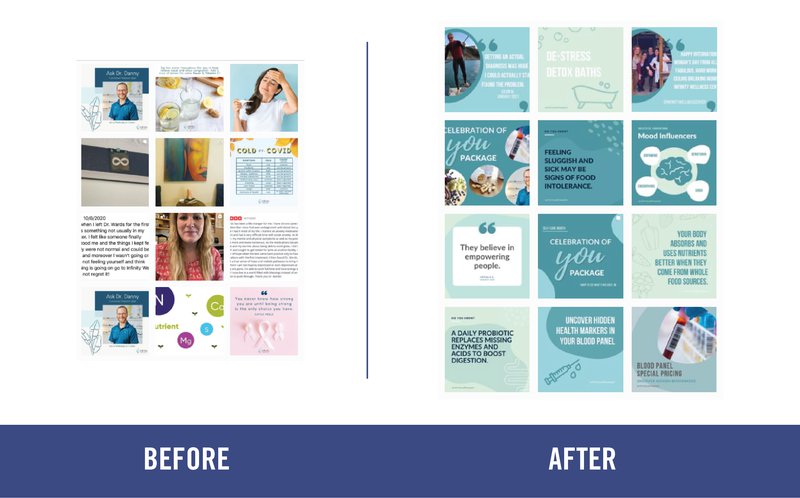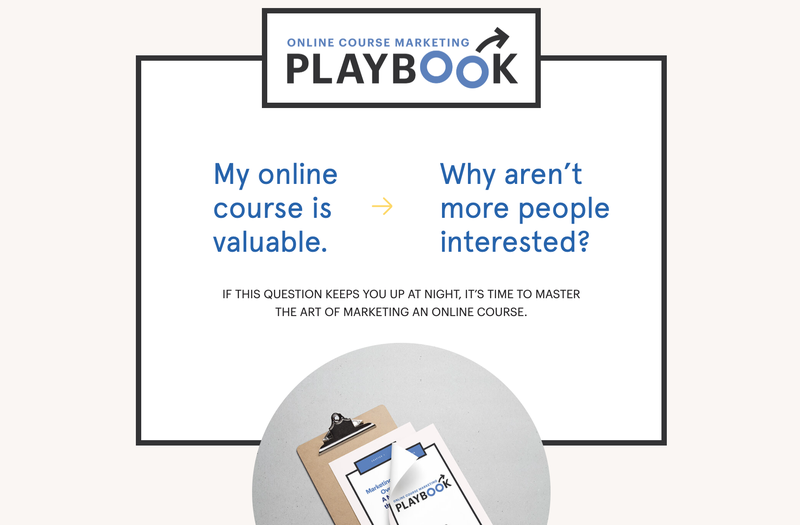7 Social Media Tips to Improve Online Course Sales
Take a page from high-profile course creators to win big on social media with tactics you can use right now.
You’ve fine-tuned your online course content to share your passion and educate others, but why aren’t more people following you on social media? This question plagues course creators across industries, skill sets, and backgrounds.
It’s a tough hurdle to overcome, but more and more common as social media platforms change their algorithms to make business pages less visible unless brands pay for exposure. Here are some techniques that the big names deploy to rise to the challenge and get more engagement.
In this guide, we’ll explore seven social media tactics for online course marketing that you can immediately use to level up your online course presence.
Refine Your Look
Make your content pop and build credibility with brand colors and typefaces incorporated into your social feed. A sleek, cohesive look that includes more than just posting pictures and random quotes keeps engagement high.
Muse pro tip: Make sure your social media graphics are correctly sized for different platforms. We like to use Sprout Social’s always up-to-date guide for current image sizes.
We’ve helped clients take their social feeds from dull to dazzling with Muse Canva Packages – the social media makeover you didn’t know you needed. Use custom templates to showcase your personality and stand out from the crowd.

With template options like Testimonials, Words of Wisdom, Polls/Surveys, Videos, and more, you’ll never run out of thumb-stopping graphics.
Define Your Content Pillars
Work smarter, not harder. If you’ve ever struggled to create a social post, you know how frustrating it can be. When you feel uninspired, having content pillars as references can be a big help.
A content pillar is a relevant topic for your audience and offerings. Stay organized and consistent by choosing 3 – 5 pillars that all your content falls under and you don’t often stray from.
If you teach online cooking courses for beginners, some of your content pillars could include
- An ingredient of the month that you feature in every recipe shared on social
- Tips you’ve learned during your own cooking journey
- Kitchen hacks every budding cook should know
This streamlines your writing process and keeps you on target, especially when a case of writer’s block sets in!
Use the Latest & Greatest
Social media platforms constantly change their features, layout, and algorithm. Rather than bemoan these updates, consider them as opportunities to engage with followers in new ways.
Become an early adopter of new functionalities and be rewarded with visibility. We’ll use Instagram as example again: accounts who used Reels early on now have a leg up over others because they built their knowledge of how to create engaging Reels.
Stay on top of platform updates so you don’t scramble get up to speed on new features.
Community Hashtags
Create a proprietary hashtag for your students to use to report out on their progress. This will help you keep an eye on what people are saying about your course – simply search your hashtag on Instagram, Twitter, Facebook, or LinkedIn to see which posts it’s featured in.
Fitness pioneer and fitness content creator Tracy Anderson created #TAmily for her clients to use when sharing their transformation journeys on social media. Thousands of posts under the popular hashtag make it easy to see what conversations are surrounding this course creator.
Engage in Content Marketing to Organize Your Stories
As a course creator, you already have a library of content at your disposal. Consider adapting aspects of your content into different forms to extend its life, like blog posts or pre-recorded webinars.
We help our clients upcycle their existing content into bite-size nuggets to share on social media. This type of value-added content should be a cornerstone of your social media marketing.
Once you post content like a blog or webinar on your website, it’s easy to get extra mileage out of it. Consider these steps:
- Identify 2-5 major takeaways from the blog post or webinar
- Write separate social media posts about each takeaway
- Share the blog post or webinar link in each social media post
- Repeat with different blogs or webinars
With this method, you have the potential to generate 2-5 social media posts from a single piece of content! We like to call that working smarter, not harder.
Other types of content that perform well and build your credibility are student or client testimonials. Our free Online Course Marketing Student Survey can help you uncover hidden insights from your student database and provide you with a roster of testimonials to use on social media.
Go live on Facebook or Instagram
Show followers the humans behind the course content. Host a Live session on Facebook or Instagram where followers can ask questions and get to know you better in real time. This is a great way to boost engagement and visibility on your accounts.
The spontaneous moments between you and followers is what makes a Live session valuable but planning ahead has its benefits. Before you go live, create an outline that answers these questions:
- What topic(s) will you cover?
- How will you break topics down in an easy-to-follow format?
- How long will your Live last?
- Are there any co-hosts or guests that make an appearance? If so, what is their role? We’ll explore more opportunities for partnerships in the next section.
If you’re camera shy, it may help to prepare a loose script to keep you on track.
Partner with other accounts or creators.
Reach out to non-competing course creators to see if they’re interested in a social media partnership. You can find these course creators by brainstorming topics that are related to your course yet different enough that they aren’t your competition.
For example, if you create digital marketing courses that cover broad topics, consider a partnership with a course creator who specializes in one area. Partnered content could be a co-hosted Live session, a promotional post on each other’s social media platforms, or a discounted bundle of select courses from you both.
Level Up Your Marketing Strategy
Social media is one small slice of the marketing pie, but it remains one of the most effective and cost-efficient options to promote your course. If you’re ready to level up your online course marketing but aren’t sure where to start, our online course marketing experts are here to help.
The Muse Online Course Marketing Playbook is a complete strategy that shares actionable advice on how to market your online course. You’ll unlock the secrets to more sales inside your student database, complete with a custom student survey.

Follow @MuseHeadquarters on social media so we can see your progress and cheer you on!
About the Author
Megan Factor is a Content Manager at Muse and a passionate creator, both professionally and personally. She developed her content marketing skills working in a wide range of industries and pulls inspiration from her diverse experiences. Her keen eye for design, penchant for writing, and love of good storytelling work together to create meaningful content that provides value to clients.
More Good Reads

Q&A: Navigating AI Overviews, Site Traffic Drops & the New Frontier of Search
Lauren Konst interviewed Matt Burkarth, a digital marketing expert from WTM Digital, for actionable tips on surviving and thriving in the AI-driven content landscape.

How a Unifying Brand Narrative Helps Your Organization Achieve Strategic Goals
From mission to movement: How you can leverage your association's story to ignite purpose, engage members and increase retention.

